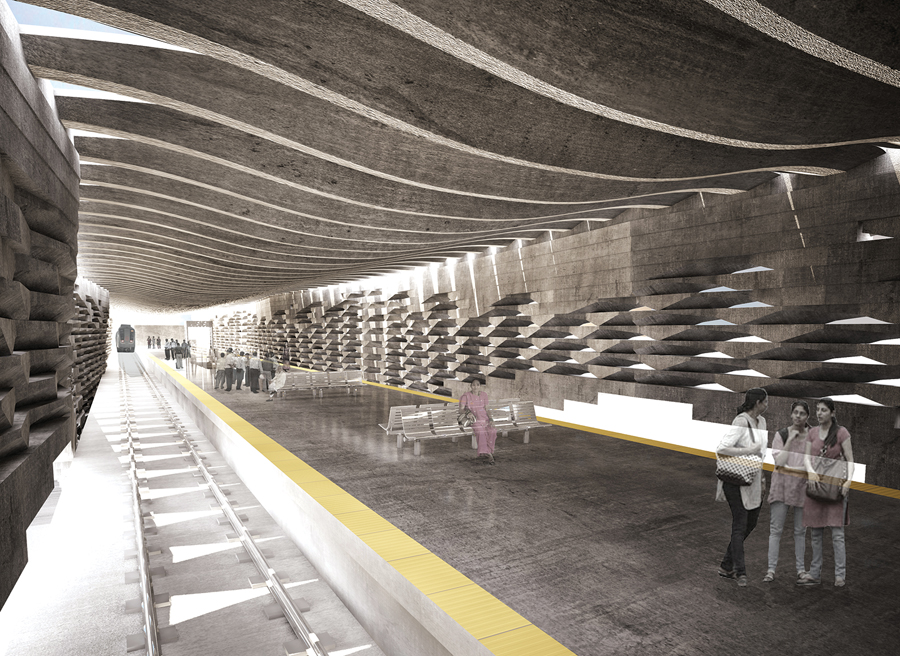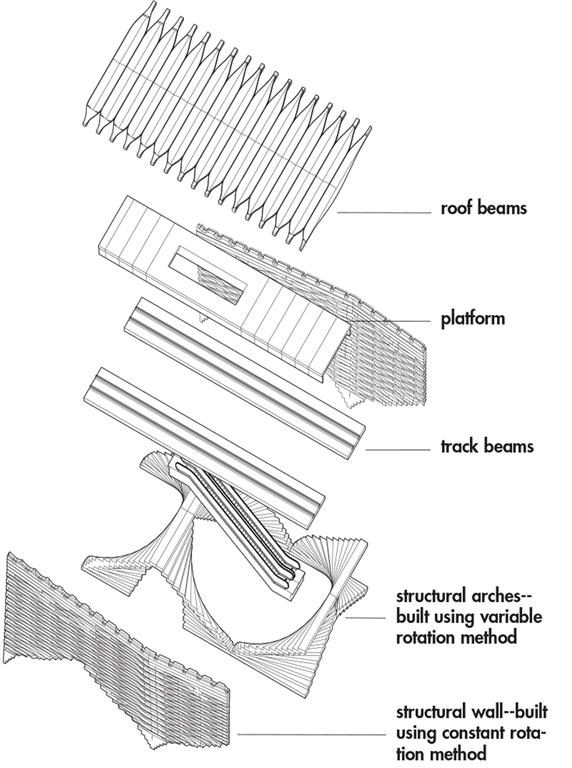Responsive Geometries
Faisal Bashir, University of Toronto
WINNER OF A 2013 CANADIAN ARCHITECT STUDENT AWARD OF EXCELLENCE

STUDENT Faisal Bashir, University of Toronto
This project revisits advances in computation and fabrication in an effort to produce a tectonic design logic that instills “civic memory” within the context of Karachi, Pakistan. Over the past three decades, Karachi has experienced poor economic development, sectarian violence and an increase in crime. This has led to a flight of human capital to Arab and European countries. The shortage of skilled labour and trained design professionals has partly resulted in the stagnation of architectural development. The project suggests utilizing the surplus workforce from the information technology sector in the construction industry, enabling the production of parametric architectural systems that pay homage to Karachi’s architectural heritage as well as encouraging an unskilled workforce to construct complex structures. Thus, this project proposes metro stations at three unique sites while employing a single architectural system to create complex and performative architectural geometries with an ease of construction.

Responsive Geometries is an attempt to learn from Karachi’s heritage and move forward with a distinct architectural style and building system. The project also investigates the issue of traditionalism of conservative cultures and contemporary architecture. Karachi, under pressure to accommodate a massive population influx, political unrest and socio-economic degradation, is suffering a loss of civic identity. The standards of architectural design and construction practices have declined over the past 70 years and in recent decades, Karachi has tried to adopt contemporary western architecture, but has largely failed, as the buildings produced are devoid of originality or culture.

Karachi Circular Railway (KCR) was launched in 1969 but was discontinued in 1999 due to administrative mismanagement and government negligence. As of 2009, a plan to revive KCR was put forward, and this thesis builds upon that plan, using it as a framework for new architectural exploration. As part of public infrastructure, KCR stations are the perfect site to conduct cultural and architectural design experiments. Three different sites (KCR Stations) have been chosen due to their unique track typology that includes an elevated track, a ground-level track and an underground track. This difference in sites will test the flexibility of the proposed building system.
Jury Comments
Karen Marler: It is fascinating to relate this student’s work to the other infrastructure projects submitted. The spatial qualities and materiality are rendered to create intrigue about these terminals while supporting this student’s interest in light and its role within a space.
Marianne McKenna: The approach gives an ephemeral quality to concrete, an inherently weighty construction material. It is ambitious in proposing a flexible yet sophisticated construction system using a constrained vocabulary of parts.
Marc Simmons: I appreciate the combination of materiality plus complexity.
